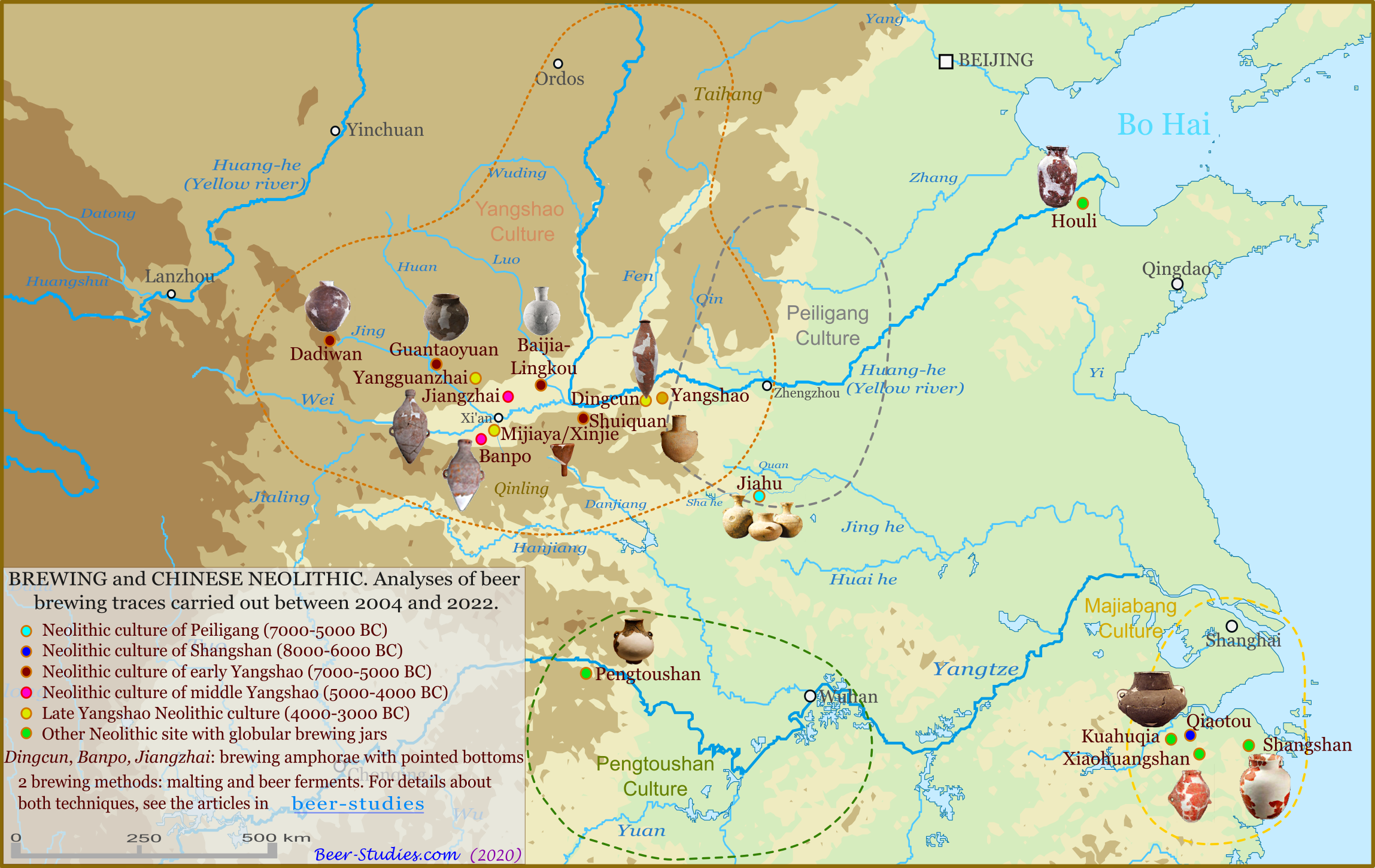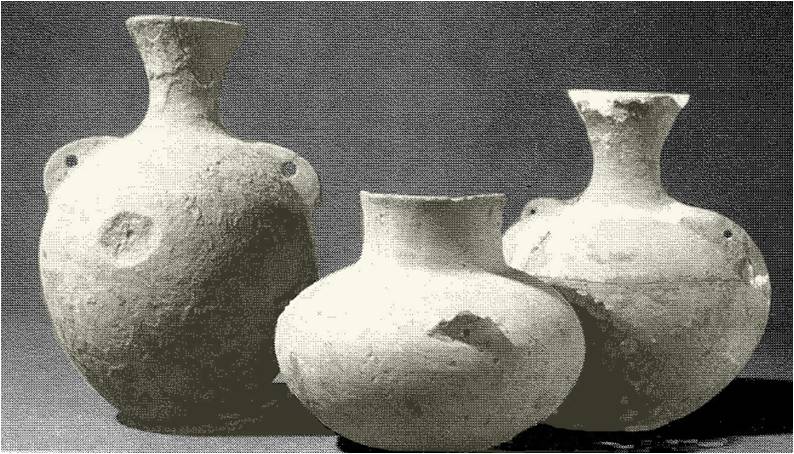Jiahu beer in China (Henan province) around 6600 BC
Ancient China provides one of the oldest testimonies on archaic beers, after Raqefet. It comes from the excavations of the Neolithic village of Jiahu in the Henan province. Archaeologists have identified three periods of occupation of the site: 7000-6600, then 6600-6200 and finally 6200-5500 BC.
The biochemical analysis of the residues of 16 shards revealed in 2003 the presence of markers of 3 fermented drinks: rice (calcium oxalate), honey (trace of wax) and fruit (tartaric acid/tartrate), hawthorn or cherry-cornaline[1].
These results are of great significance in determining the origin of beer. The chemical analysis refers to not one but 3 fermented drinks: rice beer, wine (hawthorn / cherry) and mead. The analysed vessels contained these 3 different drinks, or a mixed fermented drink made by blending these 3 kinds of ingredients, was being prepared at that time, which is the most likely hypothesis. These primitive fermented drinks have been discovered and analysed at other archaeological sites in China, West Asia and Europe.
Jiahu provides a corpus of ancient pottery, remains of the domesticated rice in northern China, pictograms, ancestors of a writing system, and the oldest musical instrument. The corpus of ceramics analysed includes perforated basins, storage jars with double handles and narrow necks, jars with long necks and upside-down spouts, utensils for preparing, storing and serving drinks. The material culture of Jiahu is well developed: agriculture, sedentary way of life, mastered pottery, proto-urbanism and proto-writing, elaborate funerary rites.
An advanced culture seems to be the condition for fermented beverages to be produced and consumed. At Jiahu, these drinks are mixed: the raw materials combine starch (millet, rice), sweet juices (fruit, berries) and honey. Beer does not seem to have stood out as a specific fermented drink, i.e. exclusively prepared from grains or other starchy sources. To achieve this, further cultural and technical development is needed, which will give cereals a predominant economic role[2].
Tomb in Jiahu with 2 beer pots near the head (7000 to 6200 BC.)
[1] McGovern P., Zhang J. & al. 2004, Fermented beverages of pre- and proto-historic China, PNAS 101 n° 51, www.pnas.org/cgi/doi/10.1073/pnas.0407921102
[2] Zhang Chi, Hsiao-chun Hung - Jiahu 1. Earliest farmers beyond the Yangtze River - ANTIQUITY 87 - 2013, Earliest farmers beyond the Yangtze River





